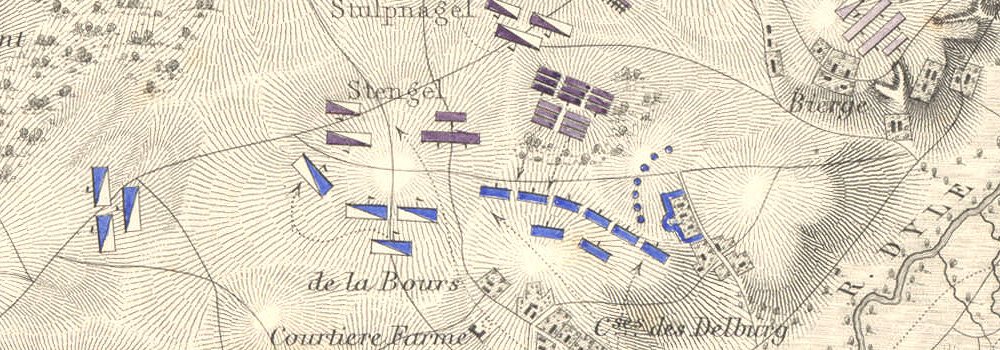Battle of Zarrentin. September 18th.
Marshal Davout ordered an advance from Ratzeburg towards Kogel and Zarrentin (supported in the flanks by smaller forces at Ziethen and Mölln). The Danish forces taking part in this advance were 2nd and 6th hussar squadron, 3 squadrons of Fynske Regiment Light dragoons, 3 squadrons of the Jydske Regiment Light dragoons, 3 jaeger companies and the musketeer companies of the Queens 1st along with a battery of 4 6-pounders and 2 howitzers. This force was supported by 2 squadrons French cuirassiers and 2 French battalions of infantry. General Wattier was appointed as the commander of the force. Marshal Davout and the Prince of Hessen both joined the Danish force as spectators.
The Danish hussars and the 2 French chasseur companies (from the French line battalions) was at the head of the Danish road column acting as a vanguard. The Danish force encountered the enemy near Tesdorf, where the enemy battalion Seydlitz (from the Lützow Freikorps) and some Hanseatiske cavalrymen were located. A daring charge by the hussars (led by second lieutenant E. Ewald) threw the enemy back towards their main force located near the town Zarrentin.
Zarrentin then became the centre of a battle between elements of the Allied main force commanded by Major Patersdorff and the advancing Danish/French troops. East of Tesdorff several clashes took place between the Danish hussars and the Hanseatiske cavalry. The Danish Jaegers advanced (with jaeger company Jess from Oldenborgske infantry regiment in the lead) towards Zarrentin after a brief long range fire fight with the enemy defenders of the town. The Danes pushed the enemy out of the town, making several bayonet charges to dislodge enemy positions. Major Petersdorff withdrew from Zarrentin towards the Schall-river, his rear covered by 3 Hanseatiske squadrons. Meanwhile the Danish-French main force had arrived at the now Danish controlled town of Zarrentin. It was quickly decided to rout the enemy from the banks of the Schall-river and thereafter try to occupy the Schallmühle bridge. 2 battalions and 4 cannons was transferred to the vanguard. General Wattier advanced to Schallmühle to lead the attack personally. Meanwhile 2 infantry companies, the Guldberg squadron of the Jydske Regiment Light Dragoons and 2 cannons were sent to Kolzin and Pamprin to threaten the enemy left flank. Major Petersdorff quickly abandoned his position on the riverbank after a brief artillery duel and fell back to towards Wittenburg, ending the engagement.
The enemy lost 26 dead, 1 officer and 100 troops wounded another 1 officer and 8 troops were missing. The Danish casualties were 3 dead, 14 wounded and 3 missing. The French losses were about the same. 2 of the missing Danes (a non-commissioned officer and a private from Fynske Regiment Light Dragoons) had been captured by the enemy and had been horribly tortured and murdered in a most savage fashion by the Hanseatiske cavalrymen after the battle.
An officer of the Fynske Regiment Light Dragoons had captured Count Westphalen during the engagement.
In his report to the King, the Prince of Hessen mentioned the Jaeger company Jess from the Oldenborgske, company Wegener from the Slesvigske jaeger corps 2nd both the hussar squadrons and the Jydske Regiment Light Dragoons as being both brave and very calm and professional under enemy fire.
